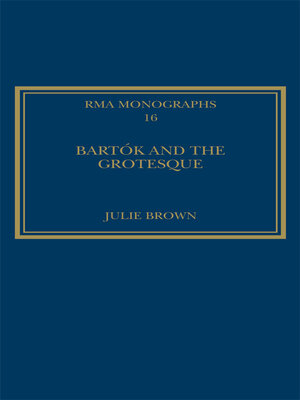Bartók and the Grotesque
ebook ∣ Studies in Modernity, the Body and Contradiction in Music · Royal Musical Association Monographs
By Julie Brown

Sign up to save your library
With an OverDrive account, you can save your favorite libraries for at-a-glance information about availability. Find out more about OverDrive accounts.
Find this title in Libby, the library reading app by OverDrive.



Search for a digital library with this title
Title found at these libraries:
| Library Name | Distance |
|---|---|
| Loading... |
The grotesque is one of art's most puzzling figures - transgressive, comprising an unresolveable hybrid, generally focussing on the human body, full of hyperbole, and ultimately semantically deeply puzzling. In Bluebeard's Castle (1911), The Wooden Prince (1916/17), The Miraculous Mandarin (1919/24, rev. 1931) and Cantata Profana (1930), Bart ngaged scenarios featuring either overtly grotesque bodies or closely related transformations and violations of the body. In a number of instrumental works he also overtly engaged grotesque satirical strategies, sometimes - as in Two Portraits: 'Ideal' and 'Grotesque' - indicating this in the title. In this book, Julie Brown argues that Bart concerns with stylistic hybridity (high-low, East-West, tonal-atonal-modal), the body, and the grotesque are inter-connected. While Bart eveloped each interest in highly individual ways, and did so separately to a considerable extent, the three concerns remained conceptually interlinked. All three were thoroughly implicated in cultural constructions of the Modern during the period in which Bart as composing.







